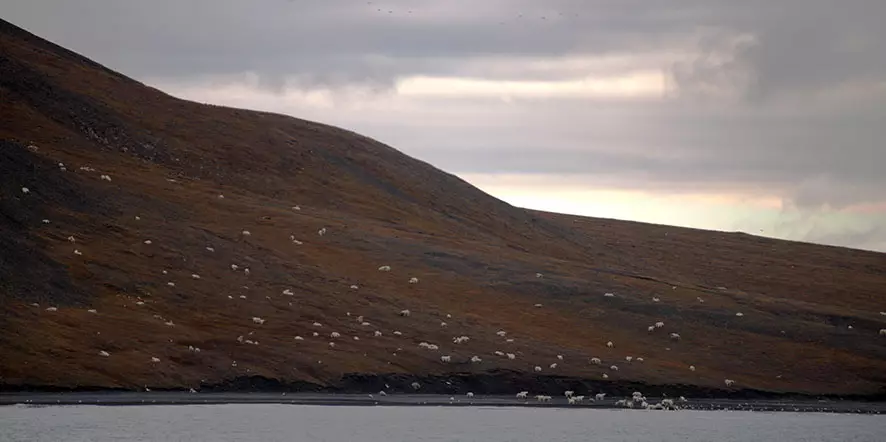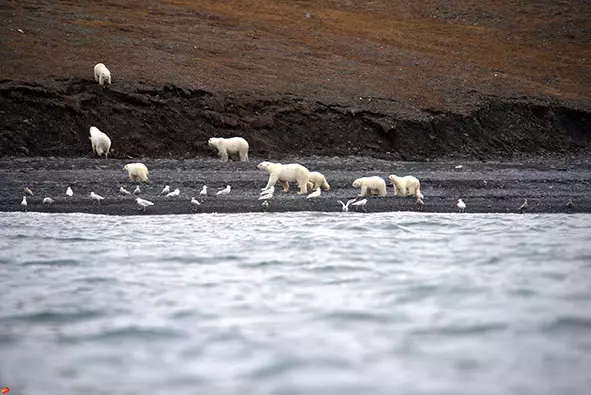
If you've ever watched a TV show about animal migrations, you'll know it's a pretty epic sight. While the title may not sound like the most compelling viewing is in store, seeing that many of the same species wandering around together to survive is bloody epic.
Other nature documentaries have showcased the almighty and ferocious scene when a pack of animals feast on a carcass. Whether it it's in the ocean, on a savannah, in the desert or high in the mountains, it's a beautiful display of how fierce the animal world is.
That's been witnessed on Wrangel Island in the Arctic Ocean, off the coast of north-east Russia. Researchers witnessed roughly one percent of the world's polar bears converge on a small shoreline to devour a dead whale.

During a tourist expedition to the island, people were amazed to see nearly 250 bears, ranging in gender and age.
It's estimated that there are between 20-25,000 polar bears left on the planet. According to Live Science, this species of bear tends to live in a solitary manner but when a whale carcass rocks up, you can understand why they come from far and wide.
Their main diet consists of seals, but they'll usually only catch about one or two out of the 10 they may hunt.

In 2008, the US listed them as a threatened species and their habitats have been suffering as a result of climate change, says the World Wildlife Federation. Researchers have explained the future is grim for polar bears if current trends continue.
Advert
A 2016 study explained how continued ice melts will see the global population drop from 26,000 to 17,000 in as little as 35 years.
National Geographic photographer Paul Nicklen recently captured heart-breaking footage of a starving polar bear struggling to stand up properly while trying to scavenge through a rusted bin for food.
He wrote on Instagram: "This is what starvation looks like. The muscles atrophy. No energy. It's a slow, painful death.
"When scientists say polar bears will be extinct in the next 100 years, I think of the global population of 25,000 bears dying in this manner. There is no band aid solution. There was no saving this individual bear.
Before you race to your keyboard to slam Paul for not helping the struggling animal, the photographer says he definitely wanted to feed the polar bear, but he was restricted on both legal and moral terms.
It's against the law to feed wild polar bears in Canada and the photographer understood that whatever food he could have given, he would have only lengthened the bear's life by a few hours or days.
Advert
Sources: Wrangel Island, Live Science, World Wildlife Federation
Topics: Awesome, climate change, Interesting, Whale, Community, Animals